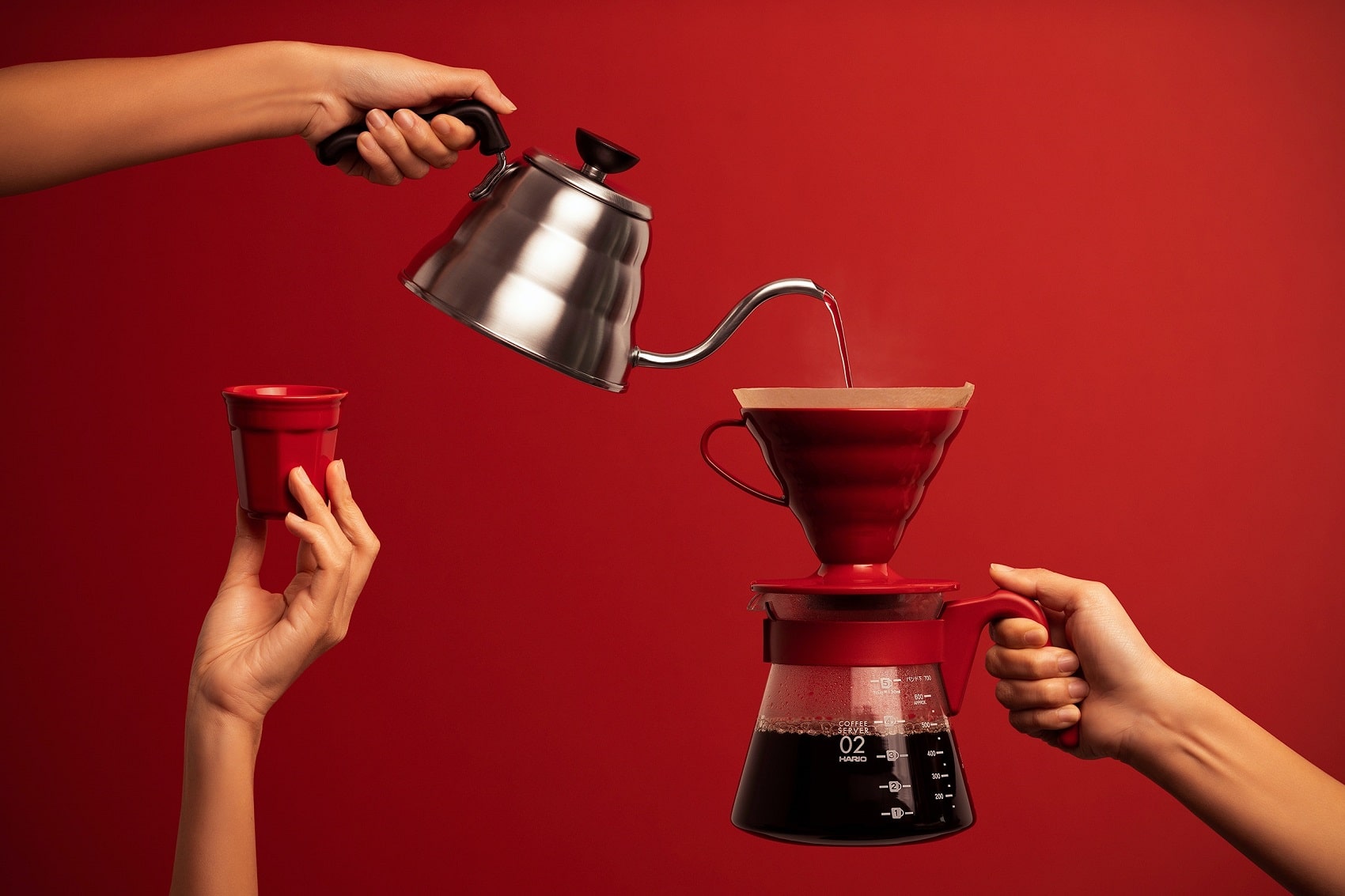
The Japanese company Hario, founded in 1921, has been dedicated to the design, production and sale of heat-resistant glass. They started this story making laboratory glassware, and then in 1948 they expanded their production to household items, starting with the coffee siphon. By 1957, it had been converted to a cloth filter siphon.
Although the V60 was released ten years ago, this has been its most famous invention. This method was initially made in ceramic and glass, then in plastic and finally in metal.
The main features of the V60 are:
1º CONE: The 60º angle of the cone adds depth to the coffee layer allowing better coffee extraction.

2º SPIRALS: Spirals or grooves marked on the sides of the cone that prevent a vacuum, allowing the release of air.

3º HOLES: Holes through which the water is poured and from where it comes out, which determine the flavor of the coffee as a result of the speed at which the water is poured and its flow.

The Hario V60 has received hundreds of design awards and has become one of the most widely used brewing methods in specialty coffee shops around the world due to its consistency and ability to maintain complete control. On the strength and body of the coffee. This wonderful method helps us to highlight the best attributes of not only body but also acidity, aroma and flavor.
What do I need for the preparation?
- Holder / jar or just use a cup of coffee.
- 21 grams or 3 tablespoons of solid coffee.
- 315-330 (ratio 1:15 / 1:16) water below the boiling point, otherwise we have a thermometer, wait 45 to 60 seconds from the boiling point (approximately 90-95 degrees Celsius).
Now to the action!
- Boil good quality water until it is between 90ºC and 95ºC (and if you don’t have a thermometer, wait 45-60 seconds after the boiling point).
- Fold the filter (natural or bleached) at the sealed parts, rinse the filter well, in order to remove the paper taste, heat V60 and the container. If these are not hot, the temperature will drop quickly and the coffee will not be extracted properly.
- Grind specialty coffee beans – medium grind. Warning: The type of grinding affects the body of the coffee. With a very fine grind, the water will stagnate because the porosity of the filter is slight. If that happens, you should thicken the grind. (More information on our blog).
- serves 21g rs of coffee; you can weigh it in the gramera or serve 3 tablespoons. The ratio that we are going to use is 1:16, which means that for each gram of coffee we will use 16gr of water, (21gr x 16gr = 336gr). We will start the stopwatch by pouring only 50 grams of water, making sure that all the ground coffee soaks in water evenly, waiting 30 more seconds. This process causes the coffee molecules to expand and release Co2, we call this explosion of olfactory gases Bloom.
- Pour the remaining water until completing the 336gr counterclockwise. This helps to generate more turbulence in the coffee and a better extraction. You can done the pouring of the water in different ways, in concentric circles from the center outwards, in a spiral from the center to the outside, by intersections or in flower, each one contributes different values to the resulting drink, if we make several pours, the result will be more balanced and pleasant. The size of the grind and the flow of the water affect the amount of time the pour takes, typically taking 2-4 minutes.
- Te sugerimos calentar la taza con un poco de agua caliente antes de servir esto evitara choques térmicos de la bebida caliente con la taza fría… luego a disfrutar de un ¡buen café!

2021